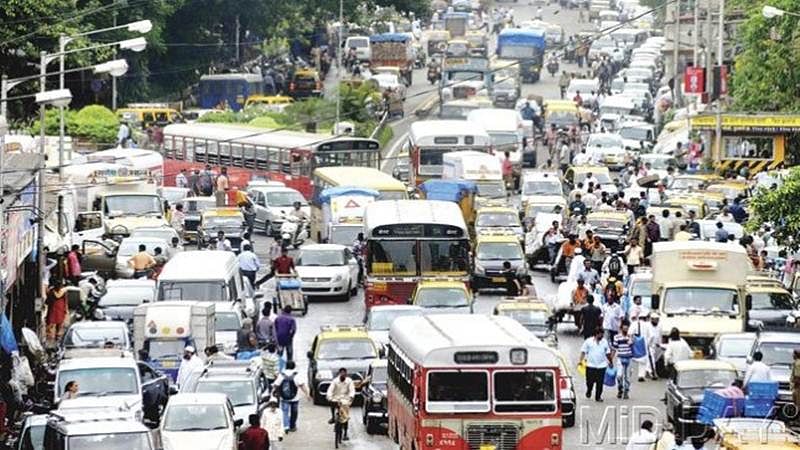The Shiv Sena-NCP-Congress alliance government in Maharashtra has released the Common Minimum Programme- the brief agenda of the government for the next five years- if it survives that long. To address the unemployment issue in the state, the CMP proposed “80 per cent reservation in jobs for local/domicile youth”
Mumbai- the financial capital of the country- has always been symbolized by ambition; one can hear thousands of stories of success in city; the people will be eager to tell you that how they migrated to city with few pennies in the pocket, and ‘MADE IT BIG’ in short span of time.
The stories of industrialist like Dhirubhai Ambani, Bollywood stars like Amitabh Bachhan, Rajesh Khanna, and lyricist like Gulzar, who built an empire in Mumbai from scratches, are very popular in Mumbai. The Bollywood movies, which often show the rags to riches story, have some amount of truth in the context of Mumbai.
In fact, lyricist Gulzar expressed the all about Mumbai in the following lines of Bunty Aur Babli:
Chote-chote shehro se khali bhor dopehro se
hum to jhola uthake chale
barish kam-kam lagti hain nadiya madhum lagti hain
hum samundar ke andar chale
The economic might of Mumbai is due to entrepreneurial communities’ like- Gujaratis, Bohra, Khoja Muslims, Parsis, Marwaris, and other trading castes from the length and breadth of the country.
The rise of Mumbai as commercial capital of the country owes to British who give primacy to island city over Surat. As the trading activities shifted to Mumbai from Surat, trading communities from Surat- Gujaratis, Bohra, Khoja Muslims and Parsis, who had decades of experience in business, shifted to Mumbai.
Therefore, South Mumbai (the colonial part of the city which is known as Bombay among locals, even today) has majority Gujarati population (62 per cent as per 1991 census).
Maharashtra has a deficit of trading castes, and therefore the activity was dominated by non-Marathi people even before the arrival of British. The industrial houses of Mumbai are run non-Marathi population.
The Richie-rich class of Mumbai, for example- Tata, Birla, Ambani, are all of non-Marathi ethnicity. If one goes to list of top 50 Indian billionaires, there are few names of Marathi ethnicity. Despite the fact that most of the billionaires are based out of Mumbai, they are not Marathi people.
As per Maharashtra Maximus, a book on Maharashtra by Sujata Anandan, “The colonial rulers had set up the Bombay Municipal Corporation (BMC) to govern the fast-growing metropolis, but the only people who were allowed to vote, until 1947, were those who paid income tax. The fact that these income taxpayers were mostly Gujarati, Muslim Bohras, Parsis and Sindhis underlined not just their economic status but their privileged positions of influence as compared to the local people who, even during independence, constituted 50 to 60 per cent of the city’s population.”
Mumbai is the most cosmopolitan city of the country, with people from almost every state and region of the country. Majority of the city’s population is non-Marathi.
At the time independence, the city was dominated by Gujaratis (in business), South Indians (in bureaucracy) and Communists (in politics). The Congress government, which was in power in the state when it was formed, wanted to get rid of the domination of various non-Marathi communities in the city.
As the state was formed with a bloody ethnic conflict between common Marathi and Gujarati administration, the Congress politicians who came to power wanted a Marathi Manus (son of the soil plank) in Maharashtra politics. Also, the fear of Mumbai declared a union territory by central government, has always hanged on Maharashtra, and its leadership.
The financial capital of India accounts for almost 6 per cent of the country’s GDP, 30 per cent of Income-tax collections, 20 per cent of excise collections, 60 per cent of customs duties, and 4,00,000 crore rupees of corporate tax collections. In FY 19, the total tax collection from Mumbai was 3.52 lakh crore rupees while the collection from Delhi was 1.60 lakh crore rupees, less than half of Mumbai. If Mumbai is lost, Maharashtra will be like a toothless tiger.
Therefore, the Congress politicians supported the rise of Shiv Sena, whose politics, in early days, was based on the sons-of-the-soil plank. Founded in 1966, Shiv Sena came to Hindutva fold in mid-1980s, after it allied with BJP. The son of the soil plank is USP of Shiv Sena, but, despite its chauvinistic politics in the last 5 decades, the cosmopolitan nature of the city has been maintained, because, despite the aggressive rhetoric, it was not implemented in letter and spirit.
If the government implements the 80 per cent quota, as per the agenda of the CMP, it will have a disastrous impact on the economy, and spirit of Mumbai. The city has been defined by success stories migrant entrepreneurial people, if the city resorts to chauvinistic agenda, the very essence of Mumbai will be lost.
